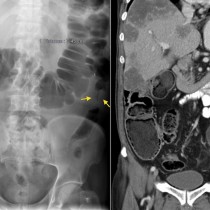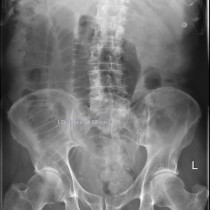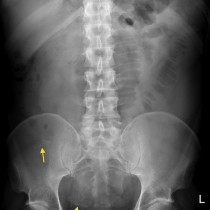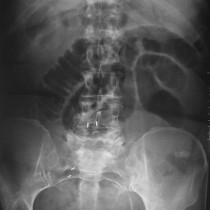Paralytic ileus
Ileus. This patient with spina bifida presented with abdominal distension. This radiograph shows dilatation of the entire colon, which measures almost 11 cm. There are no dilated small bowel loops. Paralytic ileus often involves the entire small and large bowel, however in some cases (as in this one) the colon is selectively affected, while in others there is selective dilatation of a portion of the small bowel (sometimes called a sentinel loop, classically seen in acute pancreatitis). Differentiating ileus from true obstruction radiologically can be difficult; the obvious difference is that in obstruction we are looking for a transition point between dilated and collapsed bowel, but this can be impossible to assess with a plain film. CT is commonly employed for this reason. Potential causes of paralytic ileus include peritonitis, recent surgery, sepsis, head injury, some drugs and metabolic disorders. In this patient, you will notice that the right hip is dislocated – this is a common developmental abnormality in patients with spina bifida, and may be bilateral.







